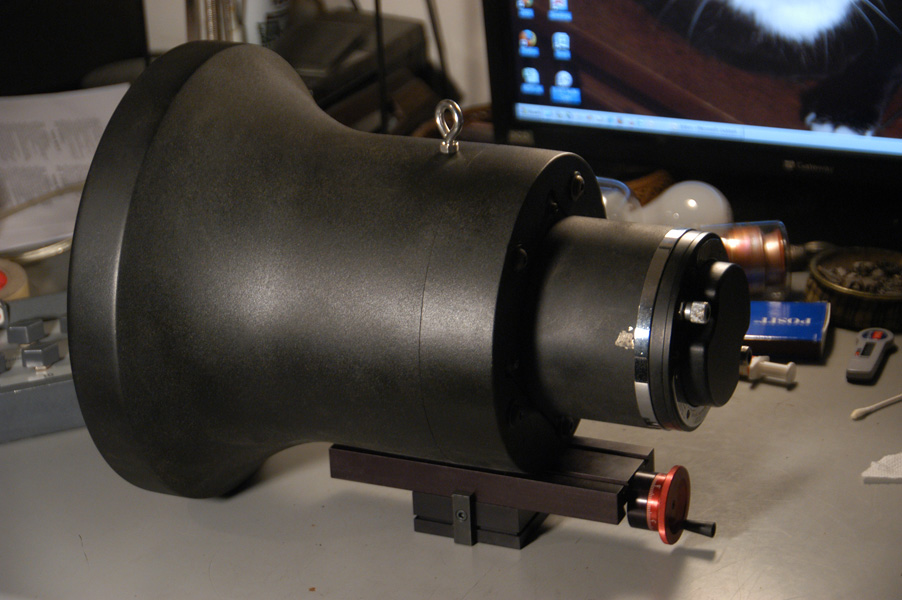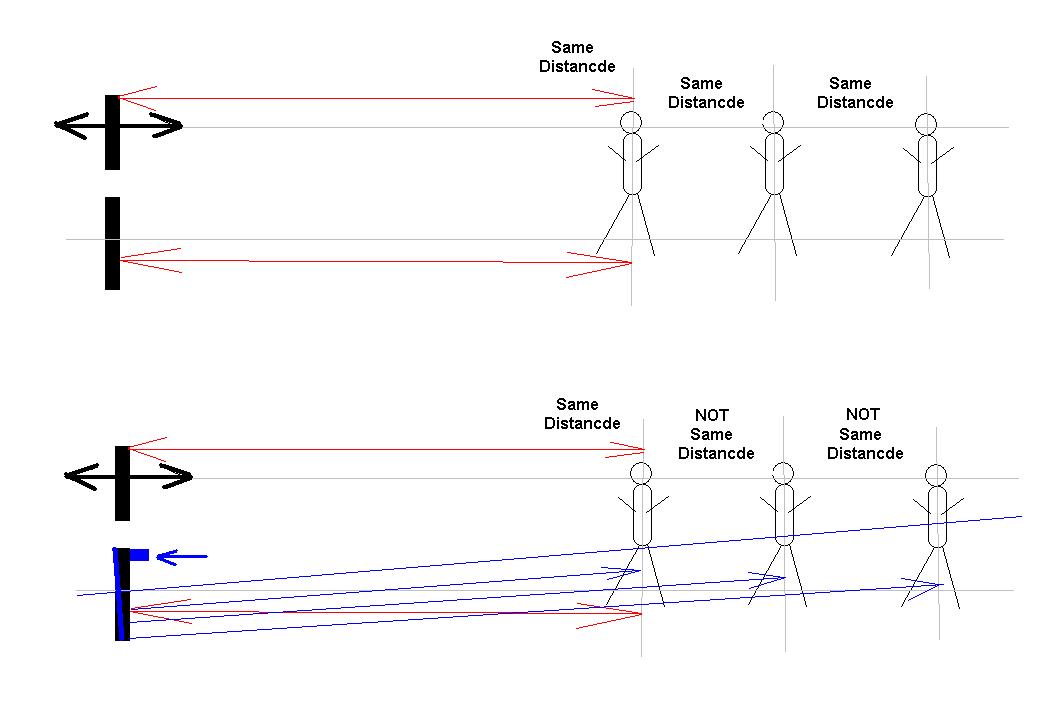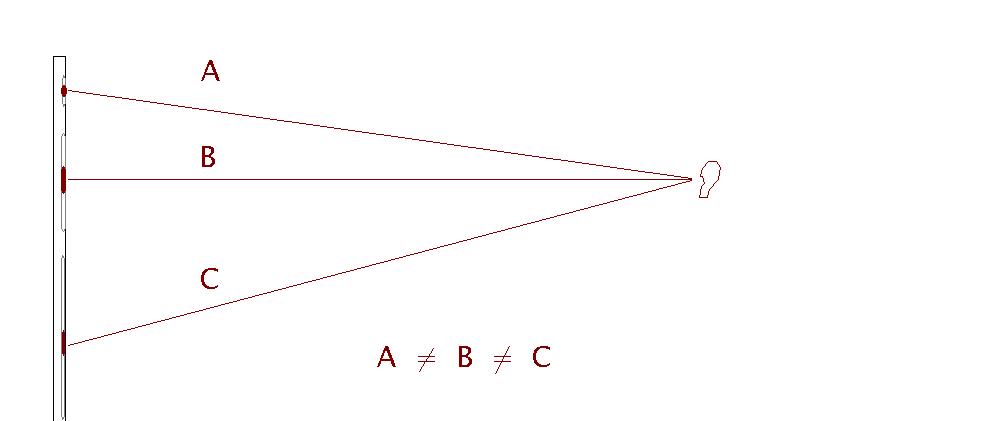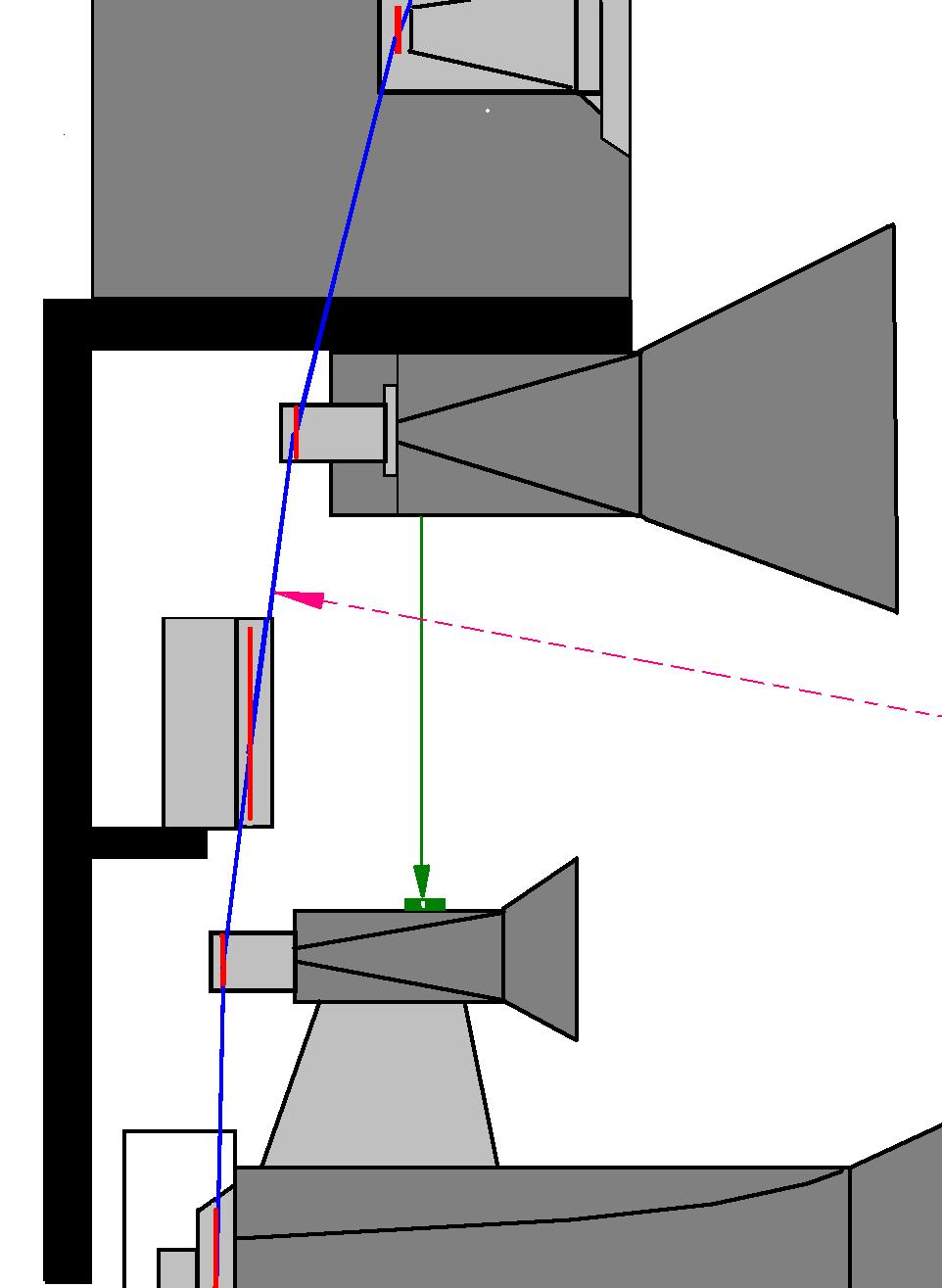|
Posted by unicon on
10-16-2009
|
|
fiogf49gjkf0d ok here is my first post about anything sound but i rather go straight on it :
because i didnt find anything online about it but find something more precious( romy cat web )
ok romy here its:
after many years of listening to various simple 3way or 4way speakers (no idea about horns ) and after taking my time and
forcing to find the best possible or treatment finding Macro and then micro positioning (no idea if i were touching the miss DPLOS)
but i found that many 3ways and 4ways Drivers not sounding in same phase but was hard to define what is the magic .
but something stupid got me trying to loosening the mid and mid bass driver SCREWS and barely the tweeter and then back to tightening em little i found the effect of tightening the screws is more stress on mid & bass and wiping the decay out and in making it DIRECTIONAL or LIVE sound, but loosening the screws
carefully u get more relaxed sound and yes mid & bass is again spacing the sound and when u get near speakers you cant recognise where
mid or bass is coming from it had emotional decay and you couldn't find anything harsh is DIRECTING .
and the up and down sound was all coming in same time and around the speakers
lets name is SCREW PHASE CORRECTION.
ok none believers ...go and play with screws and tell me what u digg...
i keep waiting till then
cheers
|
|
|
|
Posted by Romy the Cat on
10-17-2009
|
|
fiogf49gjkf0d
Unicon,
If I understand you correctly then you proposed that tightening to loosening screws that attach drivers to baffle made a lot of difference in your case.
I never come across to it. Tightening to loosening of screws would affect the resonance of the driver and the driver-enclosure combination. In case the driver mounted via very think gasket then I pres that pressing the screws on the driver harder you might angle a cone a bit the would affect the parallelness of the driver’s axis. I do not know how critical it would be with bass driver however.
So, I do not see it happen, but I admit that I never tried. The exception would be the cases when the drivers are shock-mounted to baffle (I have seen this). In this case the drivers are absolutely mechanically decoupled from enclosure. The drivers in shock-mounted situation do not have screws in normal sense but they rather have tightening bold that position the driver in relation to the mounting suspension. I do not have a lot of experience with this type of enclosure but in there I presume the tightening of suspension would make a lot of difference. The Cat
|
|
|
|
Posted by drdna on
10-18-2009
|
|
fiogf49gjkf0d I have had the same experience. I have experimented extensively with tightening and loosening the screws that mount the speakers to the baffle. I have done this with the plain wood and also by placing a gasket in between and tightening it down, similar to the idea of shock-mounting. I have used various types of rubber, varnished, oiled, waxed, and laquered paper, Sorbothane, etc. I believe there are a few issues. First, transmission of the rear wave can lead to partial cancellation. Coupling of the speaker to the enclosure leads to alterations in resonance. The speaker is stabilized in three dimensions in terms of movement, which especially affects the tweeter. Also, the speaker cones can be aligned with slight changes in the direction in which they are pointing, so that it acts as a form of micro-alignment.I started playing around with all this in the 80's. I encourage everyone to explore it. For certain speakers in certain applications it can be critical. My experience is that for a tweeter in a MTM D'Appolito configuration, it is very important.Adrian
|
|
|
|
Posted by unicon on
10-18-2009
|
|
fiogf49gjkf0d Adrian .
I think we are right about tightening and loosening where the drivers mount on battle . I was wondering how it comes that none of HI end industry folks ever care about this
issue,(consider hearing the hi-end top model speaker costing ur ass riped and u hear anyone of them sounding different?!) and never heard anyone mentioning it.thats BS
btw i can make a prototype picture which shows the tightening effects vs loosening
Romy:
i was trying to address the way the drivers mount on battle using any possible
way gasket used or shock mouted or directly screwed on wood(screws for themself are not the subject)
in any case we have tightening and loosening
you mentioned the axis alignment but ...
I confess that it has axis alignment but I consider it to be a side effect of phase and resonance alignment.
Rgs.
unicon
|
|
|
|
Posted by Romy the Cat on
10-18-2009
|
|
fiogf49gjkf0d It is not a secret the using a number of decoupling mechanisms between driver and baffle it is possible to change sound in resonance or amplitude department. However, if you guys insist that the tightening and loosening the screw has PHASE effects then let look at the problem deeper. If you remember in Macondo I use a positioning table with .01mm precision to position my MF channel.

I do insist that it make a big difference BUT I also insist that the axis must be paralleled. I presume that when we tightening or loosening a screw then we inflict a microscopic angling of the driver’s axis. This does nothing else then set driver very precisely in or out of time aliment. However, this super exact setting is applicable only for a signal point in space. This way I always advocate to keep the axis as parallel as possible and to use high calibration driver excursion positioning mechanisms, instead of the axis angling. I was taking about it many times, the picture below indicate the problems.

|
|
|
|
Posted by Paul S on
10-18-2009
|
|
fiogf49gjkf0d My own experiments along these lines suggest that relative motion of the driver itself is a factor, along with attendent augmentation and/or cancellation of certain frequencies, depending on whether the frequencies and/or resonances in question are ultimately summarily additive or subtractive relative to what might in a given instance be thought of as the "primary frequency". Of course, it can be difficult to decide what this "primary frequency" might be when listening to complex music. This situation becomes even more complicated when we consider that such resonances may be tied to loudness (SPL), as well, and that the whole is also set off or constrained by "summing" frequencies.
There's even more to consider in the case of multi-driver speakers, such as the fact that phase is also frequenciy dependent, practically speaking, and it is also subject to summing, nulling, combing, "shadowing", and other nominally-transient acoustic phenomena that ultimately come to bear on "phase" experienced as the audible portion of radiated sound waves.
The frustrating thing for me while messing with the mounting screw tensions was that there was never a universal "best" setting that involved looseness, but it would all change with different sources or at different volume settings, or after moving the speaker around. These days I have settled for a pretty snug mount on thin-ish cork or thick-ish gasket paper.
Best regards,
Paul S
|
|
|
|
Posted by unicon on
10-18-2009
|
|
fiogf49gjkf0d  Paul S wrote: Paul S wrote: |
The frustrating thing for me while messing with the mounting screw tensions was that there was never a universal "best" setting that involved looseness, but it would all change with different sources or at different volume settings, or after moving the speaker around. These days I have settled for a pretty snug mount on thin-ish cork or thick-ish gasket paper.
|
|
Paul
thats the first steps of messing with screw ... thats all about Keep tuning the screws and learning the sound coming from NEARFIELD (having your head near the drivers
and hear ). my goal was to listening NEARFIELD and trying to enjoy any music (where the result was none directional & stressed sound plusunifrom sound from all drivers i could settle down for farfield stereo listening and then repeat the procedure when i get tired ). btw in challenge to find the best setting with screws is not to giving up and keep tight to loosing the screws to find exact position.
carefull about ROOM added characteristics to sound thats why i emphasised the NEARFIELD listening.+ due to my experiencemoving the speakers just changes room reaction to sound. for instance from changing the well screw aligned speaker to another room didnt change the adjectives of NEARFIELD listening.
romy :
exact parallel sound from drivers doesnt slove the problem. and due to physics we have limitation of propagating of HF FQ more than low FQ we always encounter lack of HF whendistance from a source increases but thats obvious it reaches u the same time Yes but with 20-30 db attenuation.
idea with physic was to say: our ears just dont care much about lost dbs but way more to TIME AND PHASE of sound

|
|
|
|
Posted by Romy the Cat on
10-18-2009
|
|
fiogf49gjkf0d Unicon, I would not argue that our ears just don’t care as much about amplitude as they do about phase; I have been pitching it myself. However, I think you do properly interpret the need of the “exact parallel sound from drivers”. The parallelness of the axis is necessary not because it create the “parallel sound” but because drivers have dimensions. Because the diameter of the drivers the arrival between the side and the middle of the cone is different. If the driver is faced to microphone/listener with peripherals of the cone equidistant from the sweat spot then it is not the problem. Then you moved 2m back - the peripherals of the cone will be also equally distant from you. Now pretend that you have 2-5 drivers and unless you would like to locate them in the curve looking directly at you (that has a lot of own problems) then you would want to introduce a permanent off-axis error. The off-axis angle is not a big deal but what is important in my view in context of multi-way system is that the off-axis would be constant for all driver and do not wary with distance.
http://www.GoodSoundClub.com/TreeItem.aspx?PostID=6876

The Cat
|
|
|
|
Posted by unicon on
10-19-2009
|
|
fiogf49gjkf0d  Romy the Cat wrote: Romy the Cat wrote: |
The parallelness of the axis is necessary not because it create the “parallel sound” but because drivers have dimensions. Because the diameter of the drivers the arrival between the side and the middle of the cone is different. If the driver is faced to microphone/listener with peripherals of the cone equidistant from the sweat spot then it is not the problem. Then you moved 2m back - the peripherals of the cone will be also equally distant from you. Now pretend that you have 2-5 drivers and unless you would like to locate them in the curve looking directly at you (that has a lot of own problems) then you would want to introduce a permanent off-axis error. The off-axis angle is not a big deal but what is important in my view in context of multi-way system is that the off-axis would be constant for all driver and do not wary with distance.
|
|
romyio
you are all right about aligning the dimentions when we tension the screws AND i dont ignore it.
i think its far more than dimention i loose the 6 screws on same driver equally and sound changes ...(if i get lucky not to change driver dimention on battle place)
another idea for proving this theory is: all the same model speakers sound alike? which means no & each of them are different story.
i think in this way we correct misassembly procedure of company(because they dont have this issue on their check list of manufacturing) and get the designer intended results(if we are lucky again that even the designer was designer! not a cooker)
and in case of horns it can apply where the Drivers (MF sections)add to horn shape the Tension can change sound
but bear in mind that you sometimes need to play with LF + MF + HF sections simultaneity
you need to be radical to get ur hands on horns and make a change i bet ... they hard to figure (my thoughts)
rgs
unicon
|
|
|
|
Posted by Romy the Cat on
10-19-2009
|
|
fiogf49gjkf0d Unicon,
when you lose the 6 screws on same driver equally and sound changes then what exactly you feel is changing in sound. I do not mind you reporting that sound change but I still not at ease that you associate the change with phase. I do not think it has anything to do with phase and therefore I ask what subjectively you fell is changing while you change force on the screws. It would be very simple to confirm if the changes you report have anything to do with phase – just run impulse test with loops and tight screw and you will see if the phase was affected. I do think that you deal not with phase but with damping and resonances….
The Cat
|
|
|
|
Posted by unicon on
10-19-2009
|
|
fiogf49gjkf0d  Romy the Cat wrote: Romy the Cat wrote: | Unicon,
I do think that you deal not with phase but with damping and resonances….
The Cat |
|
Romy
to be saying it carefully the main sound change i encountered is the RESONANCE which surely deals with TIME . and talking about effects on phase must be the minor one
dont have impulse tester atm but to get the clue please read my first posts about the screw loosening to tightein effects on sound=> (SOUND CHANGE). well you can decide if sound phase is involved or not. idk alot my idea was to let everyone know how critical it can be.
btw im curious to know what you think of doing such a work on horns -,- ?
good luck
unicon
|
|
|
|
Posted by Romy the Cat on
10-20-2009
|
|
fiogf49gjkf0d
Unicon, the RESONANCE that you deal while you tightening to loosening screws does not deals with TIME . Perhaps it is the semantics that you feel comfortable but still I would live mass resonance to mass domain and would not confuse it.
The effect of tightening to loosening screws and change resonance is hugely effective in horns. Anyhow who played with compression drivers know that the back plate the presses diaphragm is usually tightened with a number of screw and depends how strong you tighten them the sound will change VERY dramatically. Some people use distortion analyzers to mount diaphragm properly, some use hearing or Fs measurements. There are some who hear/understand nothing and they juts bolt diaphragms as is. I do think that direct radiator drivers would be way less sensitive to the effect and it would greatly depends from type of the baffle, type of the baffle connection, type of the driver. I personally never experienced what you described. I seen the resonances were changed: somewhere arong the
http://www.RomyTheCat.com/TreeItem.aspx?PostID=9646
But I did not see that the tightening to loosening screws would bend the driver on the baffles that it auditably changed the timing alignment. I do not say that it is imposable I just did not experience it. The Cat
|
|
|
|
Posted by unicon on
11-17-2009
|
|
fiogf49gjkf0d i found the Fujitsu ten team (Eclipse co) brand new.
they have paid the desired attention to subject.
http://www.coherent-audio.de/download/e_TD712z_Catalog.pdf
they dont refer their technics in baffle assembly is correcting time domain(phase)
but surely doing correct the resonance.
i will run the impulse test soon btw
|
|
|
|
|